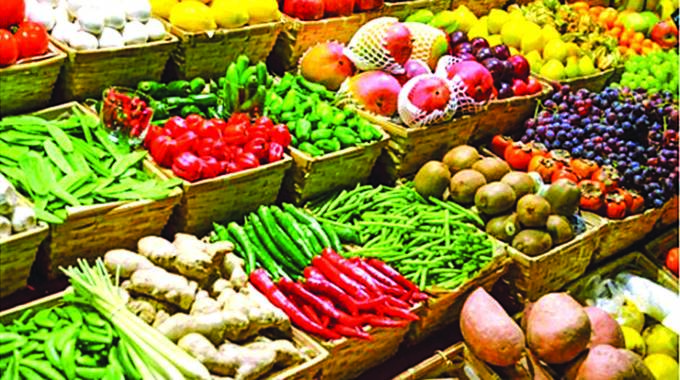
The Sunday Mail

Word From The Market with AMA
The low temperatures experienced last winter caused huge losses of horticultural crops both on the open field and in some protected structures. Farmers saw their investments go down the drain as there was failure in some crops not tolerant to frost such as tomatoes, pepper, potatoes and chillies.
After this experience, farmers have been asking questions on which crops they should produce to give them the highest returns per dollar invested. This summer, farmers can go for crops in the family of solanaceous, cucurbits, brassicas, legumes and cereals.
These crops are not tolerant to frost and will thrive in warm temperatures except for brassicas that are tolerant to frost. When it comes to productivity, production and profitability, farmers must safeguard their crops from factors that affect yield, which include biotic ones such as pests, diseases and weeds.
During summer, pests and disease incidences increase. The crops mentioned above can be grown in summer although farmers should be wary of potential challenges that inhibit growth and general productivity.
In solanaceous crops, tuta absoluta will be prevalent due the high temperatures. High temperatures will provide conducive temperatures for breeding and multiplication of new generations thereby increasing the pest population.
Whitefly will also be a threat to production as it transmits viruses and produces sooty mould. Farmers should take note that when they see one or two whiteflies, there are millions that they cannot see with the naked eye. There is increased severity of late blight and early blight as the rainwater will act as medium for inoculum to move from one plant to the other and this can lead to field abandonment.
For brassicas, there is an increase in the infestation of diamond back moth larvae due to the high temperatures. The incidence of black rot disease increases during the rainy season. Black rot is caused by a bacterial pathogen and has no curative remedy. For cucurbits downy mildew disease will be on the increase and it is a menace to production as it is systemic.
Farmers will have to come in with control measures that have a systemic mode of action. The pumpkin fly has seen farmers giving up on crops in the cucurbit family. However, for the farmer to overcome pumpkin fly, it is vital to be consistent in spraying programme from flowering to the early stages of fruit development.
In the legume family, fine beans are a profitable crop although increased rainfall amounts during the flowering stage can lead to flower abortion and decreased yields. In the cereal family, green mealies production has not been the same after the emergence of the invasive fall armyworm in 2016 in Zimbabwe.
Fall armyworm can lead to complete crop failure if it is not controlled, as it can attack the crop during the vegetative, tasselling and cob formation stages. In root crops or tubers, the sweet potato weevil, which is referred to as “pongwe’’ will leave products with a bitter taste making them unmarketable.
There is an increased awareness for environmental smart control measures. The farmer should adopt an integrated pest management programme. They should regularly scout their crops to see if the pests have reached an economic threshold level that can cause yield loss.
Farmers can use chemical, biological, cultural and physical measures to control pests. Chemical control measures will require the use of pesticides with different modes of action to avoid the harmful effects of resistance by pests.
It is always advisable for farmers to be prepared for a season and be aware of the challenges that the summer season presents. This season it should be game on as farmers take on their tasks head on. They must aim above the yield target to reach the yield target.
Written by Justice Chembela for the Agricultural Marketing Authority Horti-Focus Magazine. Word from the market is a column produced by the AMA to promote market driven production of agricultural crops. Feedback [email protected] or [email protected]



